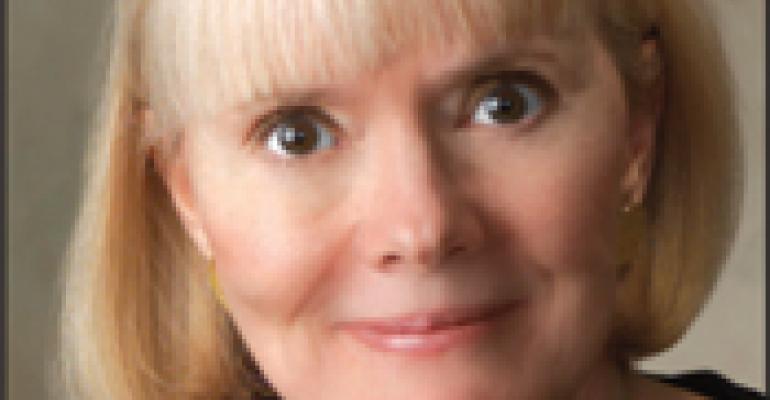While it’s not likely to replace coffee as our favorite morning brew, there’s no disputing that tea is on a tear.
There was buzz about the beverage at last summer’s World Tea Expo, an international bazaar of all things tea-related. On display at the event were organic, kosher and flavored teas, new-age tea bags, tea punches, powders and pots, and even “teaspresso.”
Winners of an iced-tea shake-off competition scored with creative combinations like green tea, aloe and mixed berry, as well as orange and grapefruit.
All the razzle-dazzle reflects the steady growth of tea in the United States, and as tea consumption rises—buoyed by both its healthful properties and its versatility—corporate chefs also have begun exploring its potential.
Some like it hot. Chain operators jazz up hot tea by taking a page from coffee retailers’ playbooks and using it as the base for a range of concoctions.
Panera Bread offers a chai tea latte that includes cardamom, cinnamon and ginger. Los Angeles-based The Coffee Bean & Tea Leaf has been out in front with fine teas for more than 40 years. The chain’s latest menu boasts trendy options like the pomegranate-blueberry latte.
Some tea specialists are following in Starbucks’ footsteps and promoting estate-grown varieties. Peet’s Coffee & Tea offers rare teas that are deemed to be of exceptional quality, like Darjeeling First Blush Namring Estate, a premium tea sold at $24.95 for a quarter-pound. It follows that the tea is defined by descriptors typically applied to a Riesling, like “flowery” and “fruity.”
Some like it cold. Iced tea, a Southern staple, now has become a standard on beverage lists from coast to coast. The NPD Group, a research company based in Port Washington, N.Y., reports that iced-tea sales at chains have risen 12.5 percent since 2001, matching increases in coffee sales for the same period.
McAlister’s Deli, based in Ridgeland, Miss., has made it a calling card. Sold by the glass or by the gallon, McAlister’s Famous Sweet Tea is advertised as a drink of mythic proportions.
As iced-tea acceptance has soared, operators have had to face the sticky issue of sweetened versus unsweetened. True Dixie-style iced tea is seriously sweet, a taste preference that doesn’t necessarily translate across regions.
Dunkin’ Donuts among other chains has chosen to offer the beverage both ways, while White Castle has come down on the side of the South with its recent system-wide rollout of sweet iced tea. Both chains market their product as freshly brewed, a promotable prep technique that’s becoming de rigueur for iced-tea programs.
Some like to mix it up. Chefs are using the cold version as the basis for other potables, like the Arnold Palmer, a mix of freshly brewed iced tea and hand-squeezed lemonade, on the bill of fare at McCormick & Schmick’s. The Cheesecake Factory takes advantage of tea’s purported calming properties with the Tranquility Tea Smoothie. In addition to hibiscus tea, ingredients include fruit, yogurt and honey. Health-oriented Jamba Juice menus several such tea smoothies as the Matcha Green Tea Blast, named for the Japanese tea that is its main component.
From a culinary perspective, tea as a food ingredient has been slower to appear in the mass market. There are a couple of notable exceptions, however, such as P.F. Chang’s oolong tea-marinated sea bass, which is broiled and served with sweet ginger-soy sauce.
Ice cream specialists have also put their toe in the water. Maggie Moo’s Ice Cream and Treatery, for example, features chai latte ice cream. The World Tea Expo showcased chefs using tea as a marinade, an infusion and a poaching medium. In addition, matcha-chocolate pot de crème showcased the complementary flavors of chocolate and tea.
Looking ahead, tea has nowhere to go but up. Teavana, a chain that opened its first unit in Atlanta and positions itself as part tea bar and part tea emporium, currently has more than 50 locations in the United States and Mexico. The menu features hot or cold teas with optional flavor shots, TeaFreezas smoothies, and specialty drinks like bubble tea. Its presence in high-traffic malls is likely to raise consumer awareness and help drive tea consumption.
All of this innovation suggests that corporate chefs should scrutinize their tea service. The tired tea bag is old news, and the product is ripe for reinvention.




